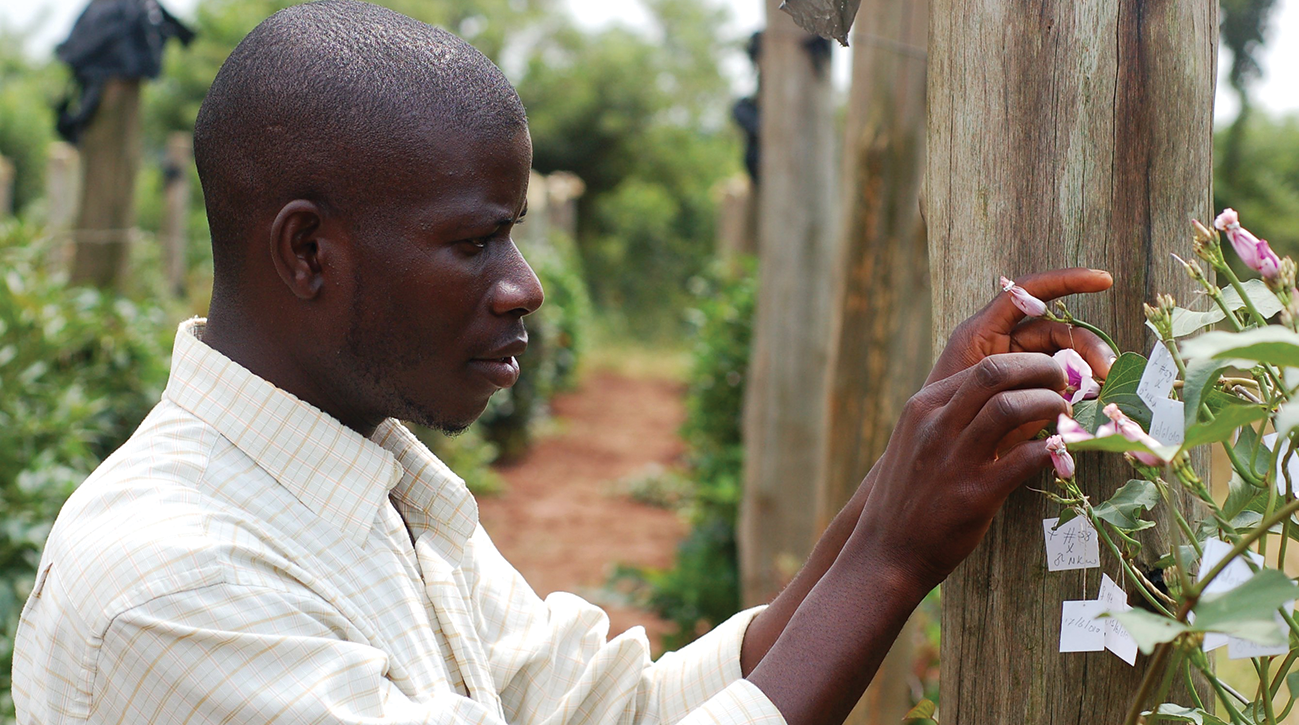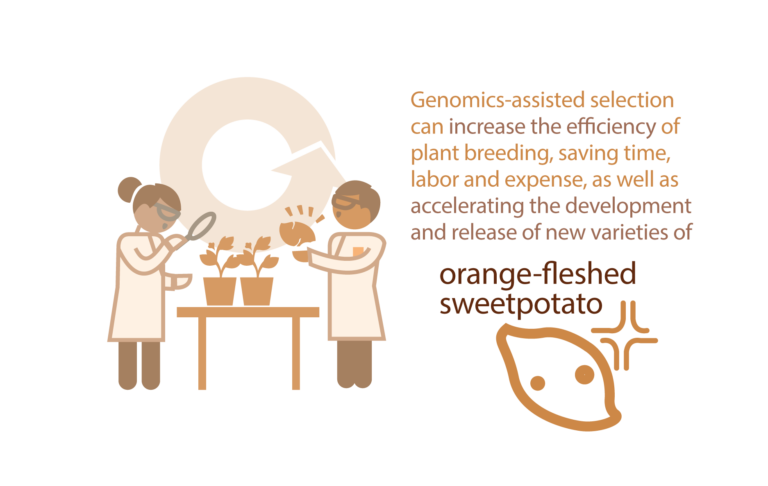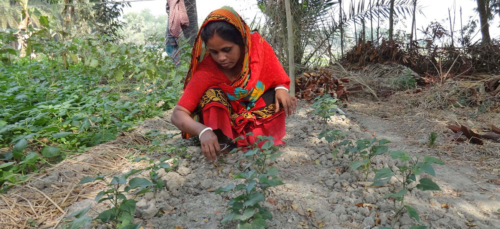
Sweetpotato, particularly the orange-fleshed varieties, has under-exploited potential to boost food security, raise household incomes, improve nutrition and help build resilience to climate change among poor farming families across sub-Saharan Africa. This project aims to develop the critical genetic, data and human resources required to enhance sweetpotato breeding systems and accelerate the release of new varieties to farmers.

Background
While cereals (principally maize) are the most common food crops grown throughout sub-Saharan Africa, sweetpotato is also popular and could make a much greater contribution to food security and nutrition. Sweetpotato is highly efficient in transforming water into calories, has a short maturity period, and can be harvested during the ‘hunger months’ before the cereals ripen. Orange-fleshed sweetpotato also provides a rich source of vitamin A, a nutrient that is particularly important for healthy growth in children. However, current sweetpotato breeding efforts are hampered by a lack of data and expertise.
This ambitious project focuses on developing the critical genetic, genomic, database and human resources required to support genomics-assisted breeding (or selection) of sweetpotato in sub-Saharan Africa. Genomics-assisted selection identifies traits of interest based on genetic markers. It can greatly increase the efficiency of plant breeding, saving time, labor and expense, as well as accelerating the development and release of new varieties.
Objectives
- Development of genomic and genetic resources for sweetpotato improvement, including genome sequencing and annotation of two diploid lines for use as reference genomes for cultivated sweetpotato;
- Development of a sequencing-based genotyping platform, with supporting bioinformatics and an analytical tools interface environment to facilitate marker-assisted breeding;
- Multi-location phenotyping of populations and markertrait association, quantitative trait loci, and causal gene validation studies, as well as genomic selection trials; and
- Enhancement of capacity for genomics-assisted breeding in research programs in sub-Saharan Africa.
Approach
The project takes a consortium approach. Collaborators include the International Potato Center (CIP), universities in Australia and USA, and agricultural research institutes in Ghana and Uganda. It has provided core resources needed to bring sweetpotato breeding into the genomics era, and to conduct genomics-assisted breeding focused on increasing the rates of genetic gain for key traits such as yield, resistance to diseases, nutritional value and tolerance of abiotic stresses including drought and heat. It has also reduced the time it takes to breed, evaluate, and release new varieties to farmers.
Achievements
The project has made excellent progress thanks to the cohesive work of its international interdisciplinary team. As of mid-2018, the project had achieved 95% of the stated milestones and developed significant new genetic and genomic resources for this critical food security crop. Most of the advances are a first for sweetpotato, an especially challenging crop because the chromosomes that hold its genetic material are arranged in groups of six, rather than in groups of two for human beings.
The team is well on the way to developing nextgeneration phenotyping (trait assessment) and genomicsassisted breeding methods for sweetpotato breeders working in Africa. Key results include the following:
- reference genomes constructed and the relevant information published in Nature, enabling greater understanding by breeders of the position, structure and function of genes responsible for important traits;
- genetic maps made publicly available online to help breeders track inheritance patterns and map the genomic regions responsible for important traits based on positions identified by the reference genomes;
- improved protocol developed for genotyping-bysequencing which enables the full use of genetic information of sweetpotato (based on their six haplotypes) that would otherwise not be fully accessed using genotyping-by-sequencing methods developed for diploid crops (such as cereals);
- bioinformatic and analytical framework for relatively robust genomic data of the sweetpotato (six haplotypes);
- improved phenotypic (trait) data analysis platform for use by sweetpotato breeders-that is highly interactive and easy to use;
- improved data capture from field experiments-using android devices with the capability to export data directly to databases, reducing error rates in breeding data;
- quantitative trait loci (genomic regions) identified related to traits for high yield, drought resistance and nutritional content, which can be combined with transcriptomic data to study causative genes, for application in breeding; and
- phenotyping for resistance to key diseases to lay the framework for using next generation phenotyping and quantitative data to breed for resistance to diseases such as sweetpotato virus.
These innovations have laid the ground for quicker, more targeted sweetpotato breeding that will help national research programs develop the nutritious, high-yielding, climate-resilient sweetpotato varieties that Africa’s farmers, processors and consumers need.
Key outputs/outcomes
| N° | |
| Reference genomes | 2 |
| Genetic linkage maps | 3 |
| Genotyping platform | 1 |
| Data sets (phenomic, genomic and transcriptomic) | >30 |
| Publications | 3 |
| Manuscripts (review, development) | >10 |
| Database | 1 |
| Analytical framework (phenomic, genomic) | 2 |
| Training workshops for breeders | 4 |
| Short-term training placement for NARs breeders | 6 |
| PhDs | 4 |
Contact
Dorcus Gemenet
CIP, Kenya
d.gemenet@cgiar.org
Thanks to our donors



